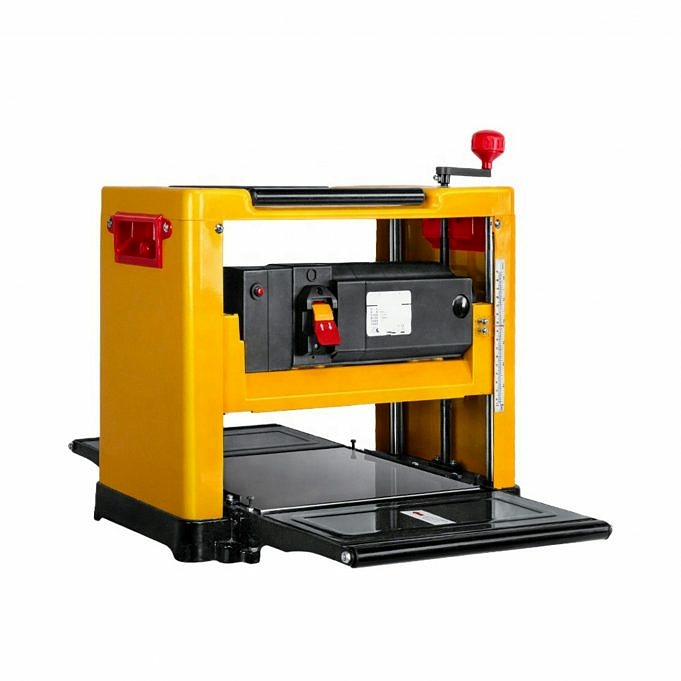A planer is a tool used for milling lumber. You can use it to smooth out rough edges and flatten warped boards.
Although it is not essential for DIY woodworking shops, a benchtop plane will make DIY woodworking projects much simpler.
It takes only a few minutes to learn how these devices can be used to plan a piece of wood safely and efficiently.
Here’s how to use your planer for your next project.
What You’ll Need
To be able to operate a planer effectively, you don’t need much.
Here’s what you need to know:
- Benchtop Planer(Our Top 5 Reviewed)
- Sturdy Work Table
A planer is a powerful tool that produces a lot of sawdust and chips. It is important to have the right safety gear.
Safety equipment that is recommended includes:
Step 1: Get Your Planer Ready
Before you can use your planer, there is some setup.
First, make sure the blade is clean. This is where sawdust and wood chips can often accumulate, so it’s important to get rid of them before you start on a new piece.
The planer blade should be set to the approximate height of the first board that you want to plane.
Plan only small sections of the board at once. You want to plan for as many boards as possible, especially if you are planning multiple boards (such like trim), so you don’t take off more than necessary.
After preparing the planer, inspect each board. You must ensure that there are no nails, screws or other objects that could cause damage to the machine.
Step II: Plane Flat Side
Each board should be run lengthwise through the planer.
Begin by running the boards through the planer, running it over each side of each board.
As I said, adjust your planer gradually, planning off a little less each time instead of trying to do large amounts all at once.
I prefer to plan them all at once, rather than planning each board individually.
Each board will be run through with the planer at one height. Next, I will adjust the planer to remove more wood. The boards will be run through the second time. This process continues until the boards reach my desired thickness.
For the best finish, plane both sides of each board.
Step 3: Clean Up The Edges
After you have finished planning the flat sides of each board it is time to clean the edges.
You will do this by placing each board on its side through the planer so that the narrow edge can be smoothed and flattened.
If you have multiple boards that need to be of the same size, it is a good idea to run them all through the planer simultaneously.
It is possible to safely run up to five boards through the planer simultaneously.
For a smooth finish, plane the edges of each board from both sides.
Avoid Common Mistakes
The most common mistake novices (and even professionals) make when using a plane is to tear out.
Tearout is when the wrong side or grain of the grain is fed into a planer.
The planer will likely catch the grain if you place a board in a planer with its rough side facing forward. This can cause gauging and cutting in the wood.
To ensure that each piece of wood enters the planer with a smooth edge, inspect it carefully before you feed it.
What About A Hand Planer?
Today’s guide explains how to use a benchtop plane.
A hand planer is another popular type of planer. This is a handheld version of the planer, just like the name suggests.
The hand planer accomplishes the same job as a benchtop planner, but on a smaller scale.
They are used for flattening and smoothing wood pieces, not milling them to the same thickness or width.
The tools can’t cut a board as thick as a benchtop planer because they are handheld and must be pressed to cut.
They are still very useful power tools for many purposes, especially when you need them to plan a board that has been installed or nailed.
Last Thoughts
A planer is an additional tool that DIY woodworkers should know how to use.
Even for absolute beginners, it is very easy to learn how to use a plane. It takes only a basic understanding and the ability to experiment until you are comfortable.



